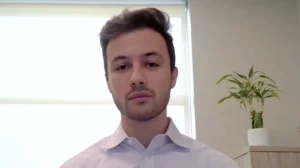Why UDL is Essential in the Post-Pandemic Learning Environment
The shock has passed, the sadness comes and goes, and the stretchy waistband pants are becoming a mainstay. While the impact of the COVID-19 pandemic persists, it may be time to settle into an educational environment that will be more online than previously imagined.
Related content: 10 ways to stay connected when going remote
Universal Design for Learning (UDL) can offer a unique lens or path toward a semblance of normalcy in this abnormal time.
UDL comes from an educational framework first conceptualized in architecture with Universal Design – creating spaces that are accessible to all – and the challenges of special education, where learning and teaching based on the “average” student was not effective.
In this pandemic, nothing about learning is average. Especially for business training and certifications. A framework that considers wide differences in human behavior and teaches to every student is critical now more than ever. UDL provides a framework to reach every student through online teaching by utilizing neuroscience for learning and following the 3 main principles of engagement, representation, and action and expression.
The first step for educators seeking to transition to an online and effectively teach all students is to start with the concept of engagement. There are a variety of ways people can begin teaching and learning online. But it is critical to start by addressing anxiety and destabilization that results from training center closures and the loss of the in-person connections and community they create.
If we all do not allow space for the sadness and acknowledge the anxiety and frustration of this new normal, then it will be a struggle for students and teachers to embrace and explore the potential of a new world of online and digital learning.
The following strategies for learner engagement are based on the principles of UDL. This engagement is critical before teaching any content:
- Check in often with students. Send an email or message frequently during instruction days. Make this a bullet pointed summary of what is expected of them. While this may seem redundant to you, it is important to ensure every student is engaged.
- Create a short survey every week for students to let you know where they are in the material and to see how they are feeling.
- Share your own feelings with your students/learners.
The second step is to attend to the different way students understand, perceive, and comprehend information that is presented to them. This means providing multiple means of representation.
- Make sure you are delivering all information and content in more than one way. If you are delivering information by text, also have a video or voice recording with it too. If you are delivering by Zoom or another web casting service, have a text version ready as well. There are great tools like Screencastomatic, YouTube, Screencastify, and Zoom recording.
- Use existing resources that have the same learning objectives or information as your usual lecture or textbook. Without the face-to-face connection and personal attention that in person classes provide, representing the course material in different ways becomes even more important. Explore Google, reach out to your Librarians, and venture into TEDx talks and YouTube territory.
Keep in mind that learners may be feeling especially out of touch with their own emotions at this time and can find comprehension even more challenging. Giving yourself and your learners the opportunity to explore different ways of looking at content and providing different content sources is helpful.
- When presenting new information to learners, support comprehension by highlighting patterns, critical features, and big ideas more than you would in the past.
- Find ways to clarify new vocabulary.
- One very powerful way to support learning is to use metacognition. Record yourself (Zoom, Screencastify, video) experiencing some new content.
How do you know students are engaged and interacting with new content? Instructors need to understand what students know, and what they do not know. This can be addressed through different forms of formative and summative assessments, giving a grade on an assignment, or a final grade. If we cannot understand what are students are “getting”, then instruction gets stuck.
- Make sure you are asking students/learners to show what they know in more than one way. If you are asking for an essay, also let students choose to share the same information in a video.
Action and Expression. Utilize assistive technologies increases accessibility to the material and benefits all students. This is an opportune time for educators to learn about, understand, and use assistive technologies. An interesting thought experiment is to view of all of your students as anything but average. Think of a bell curve of skills and abilities. Take a moment to think of all of your students at one end of the curve or the other, with no one in the middle.
If everyone is on the edges, then using assistive technology connects you back together again. Although new technology can be daunting, it is not that difficult or time consuming and the benefits can be profound. When assistive technology is applied there is greater comprehension and retention than when the lever of assistive technology is not used. Google does an impressive amount of work around accessibility.
- Record your presentations, with captions, (YouTube) for students to watch or listen to as homework. This frees up time for Google Meet or Zoom time to be more interactive.
- Ask students to record their understandings.
- Encourage students to listen to podcasts and analyze how the information is organized. Then have them imitate the organization with information they need to demonstrate knowledge on.
- Allow students to show their understanding by having them choose how they deliver the information. Allow students to write, record a video or podcast, and other creative ways for learners to demonstrate knowledge. Using a simple rubric will help you keep the goals of the content knowledge in mind.








